Publications
Voici quelques articles significatifs. Pour une liste exhaustive des productions du LOEHQ, téléchargez l’inventaire des publications et conférences en cliquant sur le lien suivant:
Filter by type:

Abstract
Background: Whereas it is well established that prenatal exposure to polychlorinated biphenyls (PCBs) can dis- rupt children’s behavior, early postnatal exposure has received relatively little attention in environmental epide- miology.
Objectives: To evaluate prenatal and postnatal exposures to PCB-153, a proxy of total PCB exposure, and their re- lation to inattention and activity in 5-year-old Inuits from the Cord Blood Monitoring Program.
Methods: Prenatal exposure to PCBs was informed by cord plasma PCB-153 levels. We used a validated pharma- cokinetic model to estimate monthly infants’ levels across the first year of life. Inattention and activity were assessed by coding of video recordings of children undergoing fine motor testing. We used multivariable linear regression to evaluate the association between prenatal and postnatal PCB-153 levels and inattention (n = 97) and activity (n = 98) at 5 years of age.
Results: Cord plasma PCB-153 was not associated with inattention and activity. Each interquartile range (IQR) increase in estimated infant PCB-153 levels at 2 months was associated with a 1.02% increase in the duration of inattention (95% CI: 0.04, 2.00). Statistical adjustment for the duration of breastfeeding slightly increased re- gression coefficients for postnatal level estimates, some of which became statistically significant for inattention (months: 2–4) and activity (months: 2–5).
Conclusions: Our study adds to the growing evidence of postnatal windows of development during which children are more susceptible to neurotoxicants like PCBs.
Objective
Several studies have emphasized the association between socioeconomic status (SES) and inadequate response of the biological stress system. However, other factors related to SES are rarely considered, such as cultural values, social norms, organization, language and communication skills, which raises the need to investigate cross-country differences in stress response. Although some studies have shown differences in cortisol levels between immigrants and natives, there is no cross-country evidence regarding cortisol levels in country-native elders. This is particularly important given the high prevalence of stress-related disorders across nations during aging. The current study examined basal diurnal and reactive cortisol levels in healthy older adults living in two different countries.
Methods
Salivary cortisol of 260 older adults from Canada and Brazil were nalyzed. Diurnal cortisol was measured in saliva samples collected at home throughout two working days at awakening, 30 min after waking, 1400 h, 1600 h and before bedtime. Cortisol reactivity was assessed in response to the Trier Social Stress Test (TSST) in both populations.
Results
Our results showed that even under similar health status, psychological and cognitive characteristics, Brazilian elders exhibited higher basal and stress-induced cortisol secretion compared to the Canadian participants.
Conclusion
These findings suggest that country context may modulate cortisol secretion and could impact the population health.
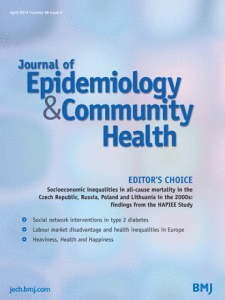
Background Household crowding is an important problem in some aboriginal communities that is reaching particularly high levels among the circumpolar Inuit. Living in overcrowded conditions may endanger health via stress pathophysiology. This study examines whether higher household crowding is associated with stress-related physiological dysregulations among the Inuit.
Methods Cross-sectional data on 822 Inuit adults were taken from the 2004 Qanuippitaa? How are we? Nunavik Inuit Health Survey. Chronic stress was measured using the concept of allostatic load (AL) representing the multisystemic biological ‘wear and tear’ of chronic stress. A summary index of AL was constructed using 14 physiological indicators compiled into a traditional count-based index and a binary variable that contrasted people at risk on at least seven physiological indicators. Household crowding was measured using indicators of household size (total number of people and number of children per house) and overcrowding defined as more than one person per room. Data were analysed using weighted Generalised Estimating Equations controlling for participants’ age, sex, income, diet and involvement in traditional activities.
Results Higher household crowding was significantly associated with elevated AL levels and with greater odds of being at risk on at least seven physiological indicators, especially among women and independently of individuals’ characteristics.
Conclusions This study demonstrates that household crowding is a source of chronic stress among the Inuit of Nunavik. Differential housing conditions are shown to be a marker of health inequalities among this population. Housing conditions are a critical public health issue in many aboriginal communities that must be investigated further to inform healthy and sustainable housing strategies.

Various studies have shown that increased activity of the hypothalamic–pituitary–adrenal (HPA) axis can predict the onset of adolescent depressive symptomatology. We have previously shown that adolescents making the transition to high school present a significant increase in cortisol levels, the main product of HPA axis activation. In the present study, we evaluated whether a school-based education program developed according to the current state of knowledge on stress in psychoneuroendocrinology decreases cortisol levels and/or depressive symptoms in adolescents making the transition to high school. Participants were 504 Year 7 high school students from two private schools in the Montreal area. Adolescents of one school were exposed to the DeStress for Success Program while adolescents from the other school served as controls. Salivary cortisol levels and depressive symptomatology were measured before, immediately after as well as 3 months after exposure to the program. Measures of negative mood were obtained at baseline in order to determine whether adolescents starting high school with specific negative moods were differentially responsive to the program. The results show that only adolescents starting high school with high levels of anger responded to the intervention with a significant decrease in cortisol levels. Moreover, we found that adolescents who took part in the intervention and showed decreasing cortisol levels following the intervention (responders) were 2.45 times less at risk to suffer from clinical and subclinical depressive states three months post-intervention in comparison to adolescents who showed increasing cortisol levels following the intervention (nonresponders). This study provides the first evidence that a school-based program on stress is effective at decreasing cortisol levels and depressive symptomatology in adolescents making the transition to high school and it helps explain which adolescents are sensitive to the program and what are some of the characteristics of these individuals.
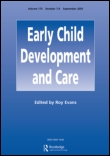
The broad aim of this study on father–child attachment was to verify whether the Risky Situation (RS) procedure is a more valid means than the Strange Situation (SS) procedure of predicting children’s socio-emotional development, and to evaluate the moderator effect of day-to-day involvement on attachment and activation. Participants were 53 father–child dyads. The RS and the SS were conducted when children were 12–18 months old to measure attachment and activation, and a questionnaire on fathering was administered at the same time. Childcare workers rated children’s socio-emotional development at 30–36 months. Regression analyses revealed that the RS predicted children’s socio-emotional development, while the SS did not, even when controlling for paternal involvement. This study advances the field by empirically testing the predictive relationships from attachment and activation to social emotional outcomes, and the moderator effect of fathering. The results underscore the value of the activation relationship theory and the RS procedure as a means for comprehending and capturing the essence of father–child attachment.
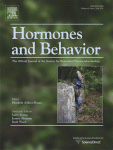
Glucocorticoids (GCs) have been related to social rank in many studies across species, a particular rank giving rise to a particular stress-related physiological profile. Our aim was to examine the hypothesis that GCs levels in toddlers would be related to social dominance in a competitive resource situation. Subjects were 376 toddlers from the Quebec Newborn Twin Study. At 19 months of age, each subject was exposed to 2 unfamiliar situations known to be moderately stressful at that age. Saliva was collected before and after the unfamiliar situations, to assess pre-test and reactive cortisol. Then the toddler reaction to a competitive situation for a toy with an unfamiliar peer was assessed and we measured the proportion of time the child controlled the resource. In girls, no association between cortisol levels and the proportion of time the child got the toy was found. On the other hand, in boys, increased cortisol levels before the unfamiliar situation were significantly related to a decreased proportion of time they got the toy in the competitive situation (r174 = − 0.17, P = 0.02). These results show that even in toddlers with limited social experience, association between GCs levels and social dominance can be found, an association that is specific to boys.

Initial validation data are presented for the Risky Situation (RS), a 20‐minute observational procedure designed to assess the father–child activation relationship with children aged 12–18 months. The coding grid, which is simple and easy to use, allows parent–child dyads to be classified into three categories and provides an activation score. By having the same parent–child dyads participate in the Strange Situation (SS) and in the RS, researchers were able to demonstrate that the RS appears to evoke specific relationship patterns. Moreover, parental stimulation of risk‐taking, the central construct of the RS, was shown to play a significant role after controlling for child characteristics (sex and temperament). These results suggested that the RS has the potential to make a significant contribution to the study of the human relationship.
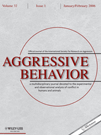
Rough-and-tumble play (RTP) is a common form of play between fathers and children. It has been suggested that RTP can contribute to the development of selfregulation. This study addressed the hypothesis that the frequency of father–child RTP is related to the frequency of physically aggressive behavior in early childhood. This relationship was expected to be moderated by the dominance relationship between father and son during play. Eighty-five children between the ages of 2 and 6 years were videotaped during a free-play session with their fathers in their homes and questionnaire data was collected about father–child RTP frequency during the past year. The play dyads were rated for the degree to which the father dominated play interactions. A significant statistical interaction revealed that RTP frequency was associated with higher levels of physical aggression in children whose fathers were less dominant. These results indicate that RTP is indeed related to physical aggression, though this relationship is moderated by the degree to which the father is a dominant playmate.
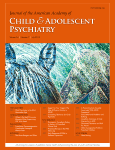
Objective
To examine the association between cortisol levels and conduct disorder (CD) in adolescent mothers. Past research has shown that low levels of cortisol were associated with CD, particularly with its aggressive symptoms. The authors tested the hypothesis that adolescent mothers with CD would show lower levels of salivary cortisol compared to mothers without CD at 4 and 9 months postpartum.
Method
Midmorning salivary cortisol levels were measured in 228 adolescent mothers (age at delivery 16.9 ± 1 years [mean ± SD]) during a laboratory visit at 4 and 9 months postpartum. CD was diagnosed during pregnancy according to the CD subsection on the criteria for antisocial personality disorder (DSM-III-R).
Results
Results did not confirm the hypothesis. Lower cortisol levels were not significantly associated with a CD diagnosis, the number of CD symptoms, or aggressive symptoms.
Conclusions
Despite valid measures and strong statistical power, this study failed to find an association between cortisol levels and CD in a sample of adolescent mothers. The results may have been influenced by the fact that participants were 4 and 9 months postpartum and by comparisons of mothers with CD to mothers living in stressful circumstances.
The aim of this article is to propose a theorization of the father-child relationship based on our current understanding of attachment, interactions between fathers and their young children, and human-specific adaptations. The comparison of mother-child and father-child interactions suggests that fathers play a particularly important role in the development of children’s openness to the world. Men seem to have a tendency to excite, surprise, and momentarily destabilize children; they also tend to encourage children to take risks, while at the same time ensuring the latter’s safety and security, thus permitting children to learn to be braver in unfamiliar situations, as well as to stand up for themselves. But this dynamic can only be effective in the context of an emotional bond between father and child; this relationship is termed the father-child activation relationship, in contrast to the mother-child attachment relationship aimed at calming and comforting children in times of stress. The activation relationship is developed primarily through physical play. It is postulated, in particular, that father-child rough-and-tumble play encourages obedience and the development of competition skills in children.
